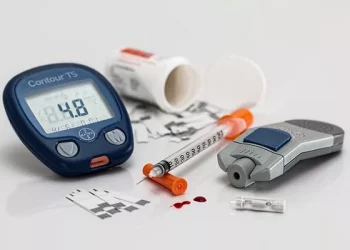A recent study has revealed that a medication already used to treat individuals with type 2 diabetes and chronic kidney disease may offer added protection against heart disease. The study highlights the potential benefits of sotagliflozin, a drug that not only addresses diabetes and kidney disease but could also lower the risk of heart attack and stroke.
Type 2 diabetes and chronic kidney disease often go hand in hand, with approximately one-third of people with type 2 diabetes also suffering from kidney disease. Both conditions are known to increase the likelihood of cardiovascular complications, including heart attacks and strokes. Researchers have been seeking treatments that can help manage these dual risks.
The study, published in The Lancet Diabetes & Endocrinology, analyzed data from the SCORED trial, a multicenter clinical study that included nearly 10,600 participants with type 2 diabetes, kidney disease, and additional cardiovascular risk factors. The participants were given either sotagliflozin or a placebo, and followed for an average of 16 months. The findings were striking: those on sotagliflozin experienced a 23% reduction in their risk of heart attack, stroke, and death from cardiovascular causes compared to those on a placebo. Notably, the benefits appeared just three months after starting the medication, with heart attack risk reduced by 32% and stroke risk by 34%.
Sotagliflozin works by blocking the SGLT2 receptor in the kidneys, helping eliminate glucose through urine. However, unlike other drugs in the same class, sotagliflozin also targets the SGLT1 receptor, which is present not only in the kidneys but also in the heart, brain, and gut. Researchers believe this dual-action mechanism may explain why sotagliflozin is effective in reducing both heart attack and stroke risk.
Dr. Deepak Bhatt, the lead author of the study and a professor of cardiovascular medicine at Mount Sinai, emphasized the importance of these findings. “People with diabetes and kidney disease are at a very high risk of cardiovascular complications,” Bhatt said. “We need new therapies to help reduce these risks.”
The promising results of this study suggest that sotagliflozin could become an essential tool for managing not only diabetes and kidney disease but also cardiovascular risk. However, Bhatt noted that further research is needed, particularly large, long-term studies involving populations at high risk for heart disease.
Michael Broukhim, an interventional cardiologist, also commented on the study’s potential impact. He stressed that while SGLT2 inhibitors have already shown effectiveness in heart failure treatment, sotagliflozin’s additional ability to reduce heart attack and stroke risks could make it a valuable option for high-risk patients. However, Broukhim called for more comparative studies to better understand how sotagliflozin compares to other treatments in the class.
As research continues, sotagliflozin may offer a promising new approach to reducing the devastating impacts of heart disease in patients with diabetes and kidney disease, offering hope for improved outcomes in a high-risk population.
Related topics:
New Research Offers Hope for Preventing Peripheral Neuropathy in Diabetes
Semaglutide Shows Promise in Reducing Alcohol Cravings, New Study Finds
Kevin Frankish Champions the ‘Above the Bias’ Campaign to End Diabetes Stigma


























